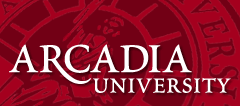Date of Award
Spring 2025
Degree Name
Doctor of Physical Therapy
Department
Physical Therapy; College of Health Sciences
First Advisor
Dr. Kerstin Palombaro
Second Advisor
Amy Harper
Abstract
Abstract Background and Purpose: Stroke is a growingly common disability that affects an individual’s bodily function, activity and participation levels and thus impacts the whole livelihood of that individual. Proprioceptive Neuromuscular Facilitation (PNF) and Task-specific Training have been shown to improve the overall functional recovery of a patient and affect neuroplasticity. Most studies tend to compare the individual effect of these techniques; hence the purpose of this case report is to describe how both PNF and task-specific training are used to improve the functional recovery of a patient in her home environment following an acute stroke. Case Description: The patient was a 75-year-old female with a known history of uncontrolled hypertension, who presented for home health physical therapy evaluation approximately one week post diagnosis of Left Ischemic Stroke with Right Hemiparesis after having been misdiagnosed previously for hypertensive crisis. The patient received 12 weeks of physiotherapy comprising of PNF and task-specific training to assist with hand function, self-care, mobility and transfers and ambulation. Outcome: The patient and family member’s goals were achieved, as patient was able to independently complete self-care and ambulate with the use of a quad cane safely within her home environment with some amount of compensation, especially for the upper extremity. Modified Barthel Index Scores improved from 20% to 85 %, with improvement also in the patient’s Chedoke Assessment. Discussion: This case report shows how two techniques commonly used within the specialized rehabilitation facility were used to rehabilitate a 75-year-old female to achieve her goals within her home environment following a stroke. Providing a comprehensive assessment and initiating appropriate treatment techniques can impact a patient’s outcome and function.
Recommended Citation
Crawford-Perry, Andrea L., "Functional recovery of a patient in her home environment following a stroke using Proprioceptive Neuromuscular Facilitation and Task-specific Training: A Case Report" (2025). Capstone Showcase. 4.
https://scholarworks.arcadia.edu/showcase/2025/pt/4
Functional recovery of a patient in her home environment following a stroke using Proprioceptive Neuromuscular Facilitation and Task-specific Training: A Case Report
Abstract Background and Purpose: Stroke is a growingly common disability that affects an individual’s bodily function, activity and participation levels and thus impacts the whole livelihood of that individual. Proprioceptive Neuromuscular Facilitation (PNF) and Task-specific Training have been shown to improve the overall functional recovery of a patient and affect neuroplasticity. Most studies tend to compare the individual effect of these techniques; hence the purpose of this case report is to describe how both PNF and task-specific training are used to improve the functional recovery of a patient in her home environment following an acute stroke. Case Description: The patient was a 75-year-old female with a known history of uncontrolled hypertension, who presented for home health physical therapy evaluation approximately one week post diagnosis of Left Ischemic Stroke with Right Hemiparesis after having been misdiagnosed previously for hypertensive crisis. The patient received 12 weeks of physiotherapy comprising of PNF and task-specific training to assist with hand function, self-care, mobility and transfers and ambulation. Outcome: The patient and family member’s goals were achieved, as patient was able to independently complete self-care and ambulate with the use of a quad cane safely within her home environment with some amount of compensation, especially for the upper extremity. Modified Barthel Index Scores improved from 20% to 85 %, with improvement also in the patient’s Chedoke Assessment. Discussion: This case report shows how two techniques commonly used within the specialized rehabilitation facility were used to rehabilitate a 75-year-old female to achieve her goals within her home environment following a stroke. Providing a comprehensive assessment and initiating appropriate treatment techniques can impact a patient’s outcome and function.
